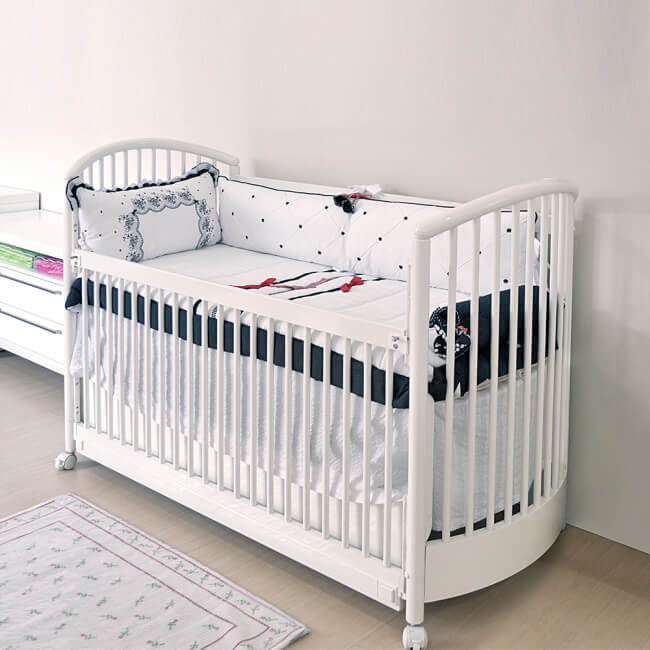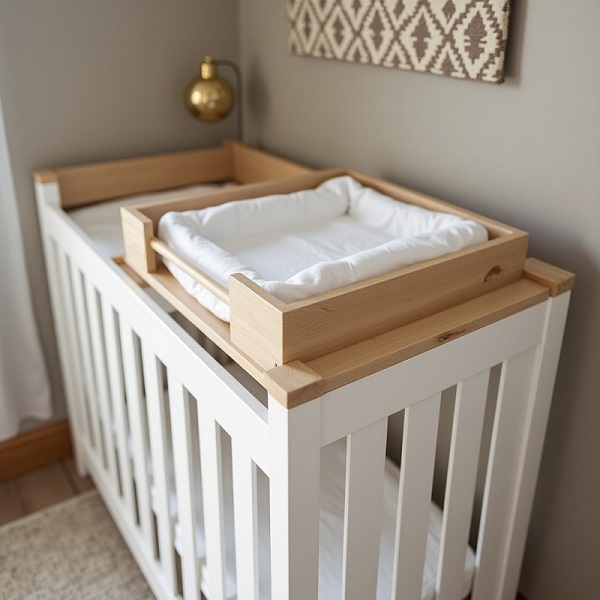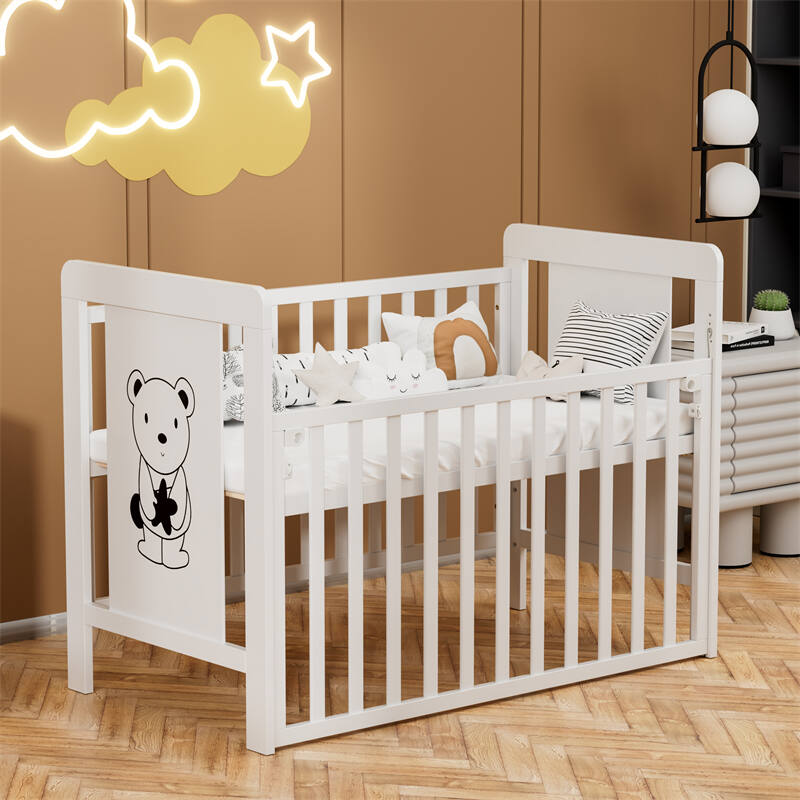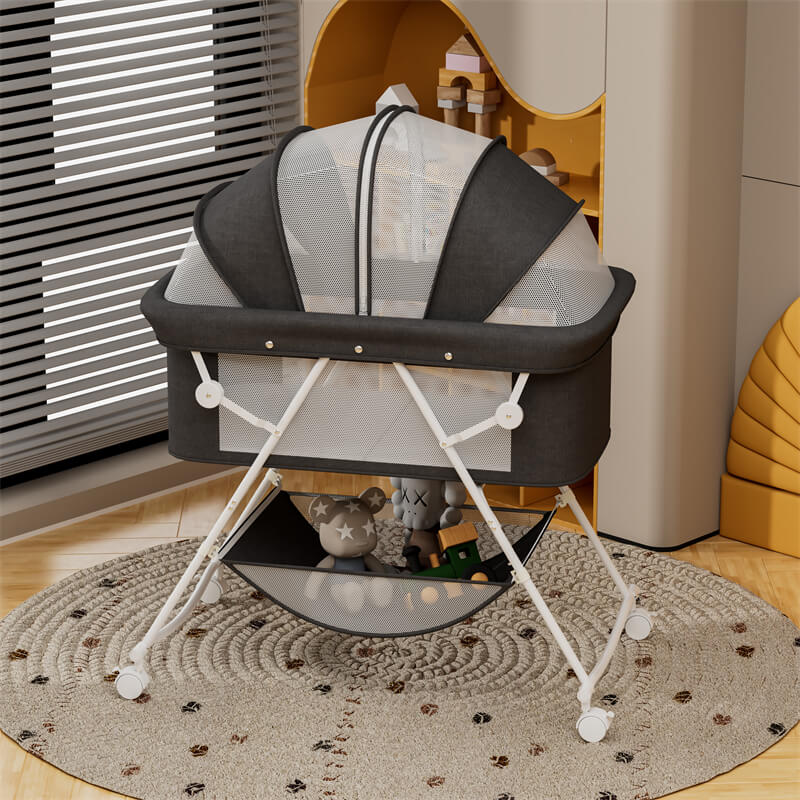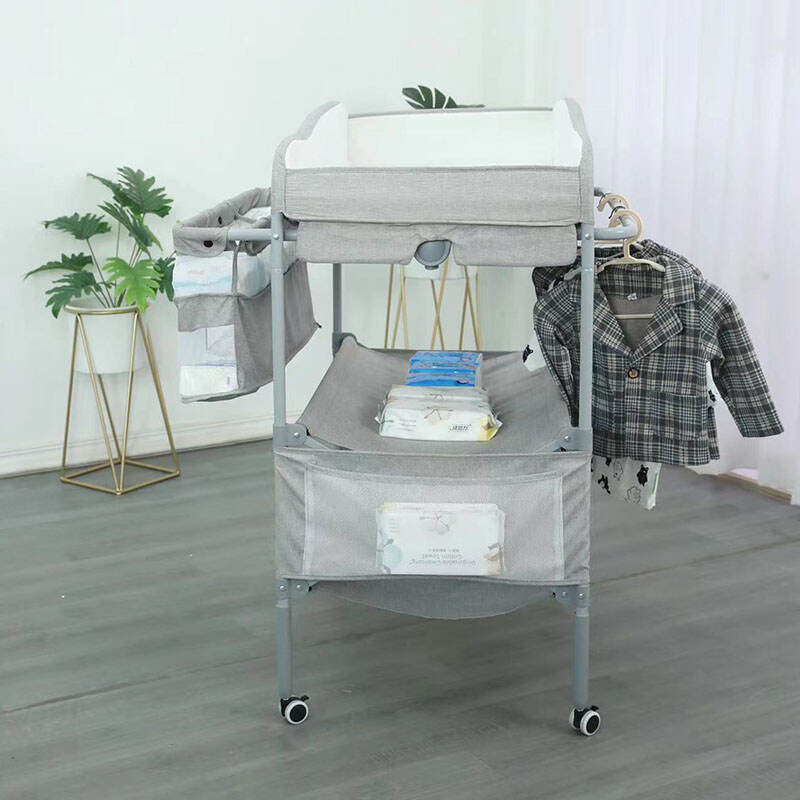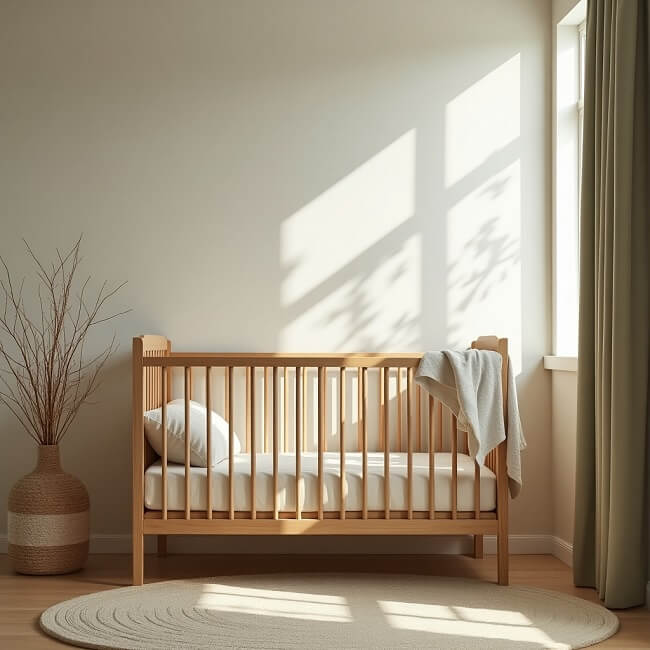Looking back, more than a decade ago, the drop-side crib was a popular choice recommended by countless parenting magazines and almost became a standard feature of newborn rooms.
This cleverly designed crib allows parents to hold their children more conveniently by lowering one side of the fence, which is indeed convenient for mothers recovering from childbirth and shorter caregivers.
However, over time, this once highly regarded crib design has gradually exposed serious safety hazards and even caused deaths and injuries. These heartbreaking incidents have prompted countries to re-examine the safety standards of such products.
Today, although it is difficult to find newly produced drop-side cribs on the market, there are still many families using second-hand products or inheriting such cribs without knowing it. This article will take you to an in-depth understanding of the rise and fall of drop-side cribs, analyze their safety hazards, and provide practical purchasing suggestions.
What Is a Drop-Side Crib?
A drop-side crib is a crib with a special design. Its biggest feature is that one side of the crib can slide up and down or fold down by a mechanical device. This design allows caregivers to more easily contact and comfort babies without having to completely lift the baby out of the crib, especially for nighttime feeding and diaper changing.
The design of this crib can be traced back to the mid-20th century. With the arrival of the baby boom after World War II, furniture manufacturers began to seek more ergonomic designs for childcare products. Drop-side cribs gradually became popular in the 1960s and 1970s, and became the standard for baby products in Europe and the United States in the following decades.
A typical drop-side crib uses metal tracks and locking mechanisms to control the lifting and lowering of the side rails. Early designs mostly used simple spring clips or knob locks, and later developed more complex double locking systems.
When the rail needs to be lowered, the caregiver usually needs to use their knee or hand to trigger two release devices at the same time, and then gently slide the rail down. Ideally, this mechanism should ensure that the fence remains absolutely fixed when not operated manually.
However, it is this seemingly convenient mechanical structure that later exposed serious safety hazards in actual use. As time goes by, plastic parts will age, metal tracks will wear, and the locking mechanism may fail, eventually causing the side fence to accidentally loosen, forming a dangerous “V”-shaped gap when the baby moves.
The serious consequences of this design defect were not fully recognized until the early 21st century and attracted the attention of regulatory authorities.
Why Are Drop-Side Cribs Considered Unsafe?
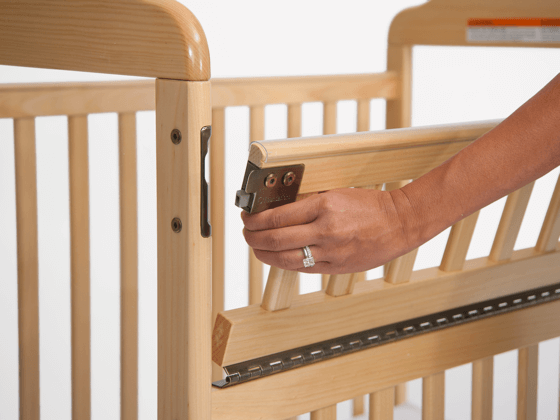
Once highly regarded, drop-side crib rails are now labeled as “dangerous childcare products.”
CPSC statistics from 2000 to 2010 show that drop-side crib rails directly caused 32 infant deaths.
In 2009, the CPSC released a shocking analysis report: in just five years, they received more than 1,100 reports of accidents related to drop-side crib rails, including more than 400 cases of injuries to infants and young children.
These accidents include not only suffocation risks, but also fractures, concussions, and other injuries caused by babies falling from loose fences. Data show that most serious accidents occurred in cribs that have been used for more than two years, revealing the systemic risks brought about by aging materials.
It is worth noting that these statistics may only be the tip of the iceberg. Many minor accidents may not be reported, and some deaths were initially mistaken for sudden infant death syndrome (SIDS) until in-depth investigations revealed that they were related to crib defects.
Are Drop-Side Cribs Banned? Current Regulations
In response to the increasing number of casualties, major crib manufacturers such as Delta, Stork Craft, and Simplicity proactively recalled millions of drop-side crib rails between 2007 and 2010.
In 2011, the U.S. Consumer Product Safety Commission (CPSC) officially implemented a federal ban on the production, sale, resale, and distribution of drop-side crib rails in the United States. The ban also applies to cribs used in childcare centers and hotels. This ban is not a simple product recall, but a complete ban on such products at the legislative level.
According to the latest regulations of the Consumer Product Safety Improvement Act (CPSIA), all cribs sold in the U.S. market must use a fixed fence design, and any crib with a movable side fence is considered to be non-compliant with safety standards.
Specific requirements of current regulations
The current US crib safety standard (ASTM F1169-19) clearly stipulates:
- Any removable or retractable side rail design is prohibited
- All rails are required to be fixed and non-adjustable
- Enhance the structural strength requirements of the bed support system
- Increase the durability requirements of hardware accessories
- Mandate that slot spacing be limited to a maximum of 2.375 inches.
Global regulatory situation
The U.S. ban has set off a global ripple effect:
- Canada followed up with a similar ban in 2016
- The EU has banned this type of design in disguise through the EN 716 standard
- Australia has listed detachable side cribs as “high-risk products.”
- Japan revised its crib safety standards in 2012
Can Drop-Side Cribs Be Fixed or Modified to Be Safe?
Professional organizations and safety experts unanimously emphasize that the potential risks of drop-side cribs cannot be eliminated through simple home modifications.
The design of the drop-side crib has structural defects, which are a fundamental problem that cannot be changed by modification. Even if the movable sides are fixed with screws or glue, the overall structure of the bed has already produced fatigue and wear that is difficult to detect with the naked eye due to long-term use.
Material aging is another problem that cannot be solved by modification. After years of use, plastic parts will degrade at the molecular level, metal accessories will produce microscopic cracks, and wood may deform. The decline in the performance of these materials is irreversible, and any surface repair cannot restore the original strength and toughness of the materials.
Safety experts especially remind that the safety standards for cribs are holistic requirements formulated through rigorous scientific testing. Simply solving the most obvious removable side problem will not make the old bed meet the requirements of the current standards in other aspects, such as slat spacing, mattress fit, structural strength, and other indicators.
Partial modification is like painting a new paint on a dangerous building, which cannot change its dangerous nature.
Drop-Side Crib Alternatives for Modern Parents
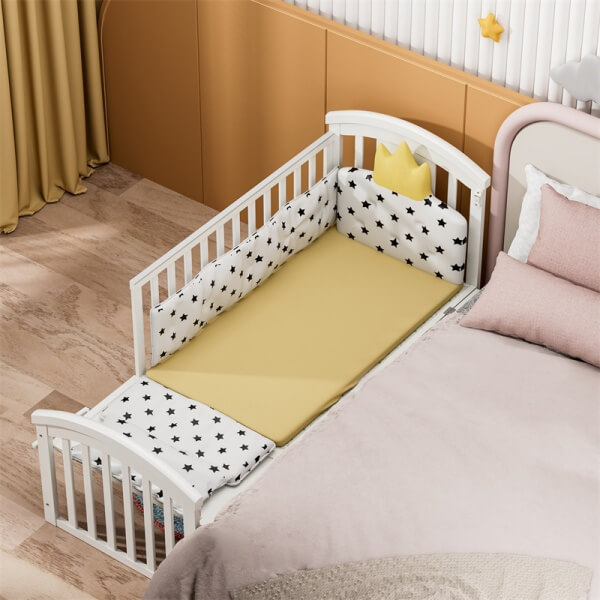
Many parents choose a drop-side crib for practical reasons – physical discomfort during the recovery period, operational difficulties caused by height restrictions, or convenience considerations for frequent night feedings. Fortunately, modern crib designs have seen a variety of high-quality alternatives that are both safe and solve these practical problems.
Cribs with Adjustable Mattress Heights
For caregivers who are shorter or have limited mobility, a fixed crib with adjustable height is the best choice. This type of product uses an integral lifting design, which facilitates operation by adjusting the height of the bed board instead of moving the fence.
High-quality products usually provide 4-6 levels of height adjustment. At the lowest level, the mattress surface is only about 15 cm from the top of the fence, allowing caregivers under 1.6 meters tall to easily pick up the baby without having to bend over. This design completely avoids the safety hazards of removable sides while providing better lumbar support.
Bedside Bassinet
The bedside bassinet is particularly suitable for mothers who have delivered a caesarean section or are recovering from childbirth. This type of product can be perfectly connected to the big bed. One side fence can be lowered but remains fixed. The mother only needs to turn around to take care of the baby, which greatly reduces the pain caused by getting up.
Unlike the old detachable side bed, the connection mechanism of this type of product has been strictly tested for safety, and there is no risk of accidental loosening.
Pack and Play
A pack and play is another option worth considering. This type of product intelligently combines the crib, diaper table, and storage space, and all functions are set at a height suitable for operation. The specially designed nursing platform allows parents to complete various care actions while maintaining a good posture, reducing the burden on the waist.
Compared with the old detachable side bed, this integrated design is not only safer, but also reduces the physical exertion when taking care of the baby.
Is It Legal to Sell a Used Drop-Side Crib?
Can those drop-side cribs that are no longer in use at home be resold on the second-hand market?
The CPSC ban clearly stipulates that any form of sale of a drop-side crib is illegal. This includes but is not limited to: online second-hand trading platforms, yard sales, donations to charities, and even free gifts for others to use. Canada, Australia, and other countries have similar regulations that prohibit any form of circulation of such products.
Violators may face heavy fines and may also be held criminally liable if the resold crib causes an injury.
It is worth noting that the legal ban is completely retroactive. This means that even if the product was purchased brand new before the ban came into effect in 2011, it is illegal to sell it now as long as it has a removable side design. Many second-hand trading platforms have already included such products on the banned list.
For the drop-side crib that you already have at home, the most responsible way to deal with it is to stop using it immediately and contact the local solid waste management department to learn about safe disposal methods.
Many communities have special recycling points for childcare products, and some furniture retailers also provide trade-in services. Disposal through formal channels can not only ensure that the product will not continue to circulate, but also promote material recycling.
How Can Parents Choose a Safe Crib Today?
Product Certification Marks
In the US market, look for products that are CPSC certified and meet ASTM F1169 standards. In Europe, EN 716 certification is a safety guarantee. Chinese consumers should look for GB 28007-2011 standards.
These certification marks are usually prominently marked on the product label or manual, and are the first line of defense for safety.
Structural Design
High-quality and safe cribs must use a fixed fence design and completely abandon any movable or adjustable sides. The spacing between the fence slats must be strictly controlled between 4.5-6 cm – this distance can ensure ventilation and prevent the baby’s head or limbs from being stuck.
Look carefully at the various joints of the bed. High-quality products will use mortise and tenon structures or heavy metal fittings instead of simple plastic connectors.
Material Selection
Solid wood frames are the safest and most reliable choice. High-quality birch, beech, or pine are common materials. If you choose a spray-painted product, be sure to use non-toxic water-based paint.
Special Mattress
A safe crib must be equipped with a special mattress, and the size must be “perfectly fitted” – the gap between the mattress and the bed frame cannot exceed two fingers (about 3 cm). Memory foam or high-density foam mattresses are more suitable for infants and young children than spring mattresses and can provide better support.
Conclusion
The lesson of the detachable side crib tells us that any convenience that may endanger the safety of children is not worth trying.
Fortunately, modern crib design has found a balance between safety and functionality. Through overall height adjustment and scientific ergonomic design, it not only ensures safety but also takes into account the actual needs of caregivers.
Those designs that were once considered “convenient and practical” were eventually eliminated due to safety hazards, which reminds us: In the field of infant safety, we must always meet the most stringent standards.
Recommended Related Articles:
- Crib Recalls 2025: What Parents Need to Know
- 7 Best Convertible Cribs That Grow with Your Baby (2025)
- Are Cribs with Changing Tables Worth It? Complete Parent’s Guide
- What Is a Mini Crib? A Complete Guide
- Can Twins Sleep in the Same Crib? A Complete Guide for Parents
- What to Look for in a Crib?
- Crib Sizes: A Complete Guide
- Best Materials for Baby Crib

